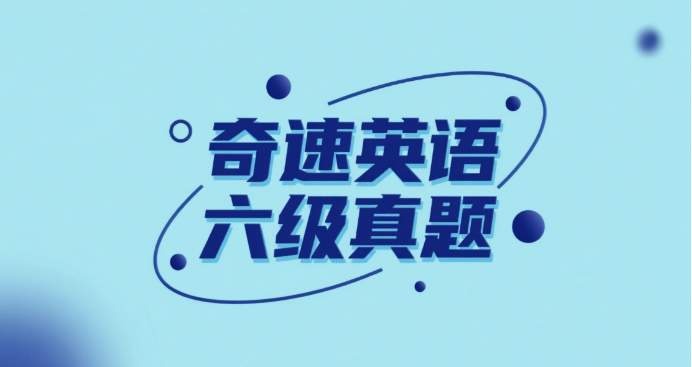①Simulators are most often utilized within industries such as nuclear power, aviation and surgery where failure results in disastrous consequences. To maximize the value from a simulation learning experience, participants should immediately and directly apply their learning to a specific intervention within their organization.
②Most organizations aspire to deploy significant change programs, only to find them nearly impossible to implement. That is largely because successful change requires more than a vision, it requires a workforce that not only doesn’t resist change, but embraces it.
③To achieve success, an organization must build a transformation program that will allow change to be rapidly pulled across its departments and throughout its layers. Regardless of the level of senior management commitment, unless key thought leaders at all levels embrace the change, the initiative will wither and die. To create this kind of widespread passion, learning leaders must expose the workforce to what could be, which will enable them to rethink their mental models, enable them to break free from their deep-rooted paradigms and embrace the opportunity to learn.
④Allowing participants to enter a simulated environment provides them with the opportunity to experience alternative realities which can prompt them to rethink their current beliefs.
⑤Behavioral change is not easy for most adults. Lectures, training programs and workshops can explain the intellectual elements of transformation, but they are seldom effective at getting to the behavioral aspects that lie at the heart of a significant change initiative. Further, under normal working conditions, managers rarely see the full effect of their employee development efforts. As such, an intervention like a simulation can provide the stimulus for change.
⑥An effective simulation can be better than experience as a learning tool because it accelerates time, compresses space, and unlike reality, is specifically designed to maximize participant learning. Simulations provide an immersive learning experience where skills, processes and knowledge all can be highlighted in a way reality cannot. The ability to explore, experiment and repeatedly apply new knowledge in unlimited, risk-free models is what makes simulation one of the most productive forms of learning.
⑦Well-designed simulations can enable individuals and groups to develop a deep level of understanding about how their decisions and intuitive responses to business stimuli affect their fellow participants and the organization as a whole. To reap the benefits, however, simulations must feel like reality. At the end of the successful simulation, participants must declare “this is us.” If they don’t, they will view the experience as a game, which can be difficult to apply on the job, or worse, irrelevant to everyday work tasks. To maximize benefits from simulation, participants should immediately apply the learning from the experience to forge a smooth link between learning and doing.
1.1. What do we learn about successful changes in organizations?
A They can be immediately implemented with great case.
B They are usually led by organization leaders of vision.
C They call for enthusiastic support from the workforce.
D They often result from simulation learning experiences.
解析:选C。
C细节理解题。第二段提到,成功的变革不仅需要愿景,还需要一支不仅不抵制变革,而且会拥抱变革的员工队伍,换言之,组织中的成功变革需要员工的热情支持,故C项为正确答案。该段第一句提到,大多数组织的变革计划几乎无法实施,A项与原文内容相悖,故排除。文中虽然提到了vision,但指的是变革的“愿景”,而非领导者的“远见”,故B项可排除。原文只是说模拟是一种学习工具,有助于推动变革,并未提及成功变革通常源于模拟学习体验,D项过度推断,故排除。故选C。
2.2. What should learning leaders do to arouse learners’ passion for change?
A Allow them to see what could possibly be achieved.
B Help them break free from their old paradigms.
C Encourage them to rethink their thought models.
D Stimulate them to embrace fresh opportunities.
解析:选A。
A细节理解题。第三段第三句提到,为了激发这种广泛的热情。学习型领导者必须让员工看到变革可能带来的图景,也就是让他们看到变革可能实现的成果,A项与原文表述相符,且该选项中的what could possibly be与原文中的what could be相对应,故为正确答案。其他三项“摆脱旧有范式”“重新思考思维模式”“拥抱新机遇”均属于“看到变革图景”后的结果,都是员工在受到激励后自身发生的行为变化,而非学习型领导者应采取的行动,故均排除。故选A。
3.3. What does the passage say about lectures, training programs and workshops?
A They are generally incapable of changing workers’ behaviors on the job.
B They are interventions different from simulations in creating stimuli for change.
C They aim at transforming the behaviors of the workers in an organization.
D They help managers achieve the full effect of employee development efforts.
解析:选A。A推理判断题。第五段第二句提到,讲座、培训项目和研讨会能够阐释变革的知识要素,但很少能有效触及重大变革举措核心的行为层面。由此可知,这三种活动只能让员工学到理论知识,通常无法改变员工在工作中的行为,故A项为正确答案,同时据此排除C项。该段最后一句提到,像模拟这样的干预措施能够为变革提供动力,但并未提及以上三种活动也能为变革提供动力。故B项排除。原文提到,管理者很少能看到员工发展举措的全面成效,这说明以上三种活动并未帮助管理者实现员工发展努力的全面效果,D项与原文内容相悖,故可排除。故选A。
4.4. What makes simulation one of the most fruitful forms of learning?
A Its capability of saving time by accelerating the immersive learning experience.
B Its potential for learners to examine their skills, knowledge and learning process.
C Its capability of providing all participants with a practical learning experience.
D Its potential for learners to explore, experiment and practice without any risk.
解析:选D。D细节理解题。第六段最后一句话明确提到,在无限制、无风险的模型中探索、实验以及反复应用新知识的能力,使模拟成为最有成效的学习形式之一。D项符合原文表述,故正确。A项和B项虽然也是模拟的优点,但不是其核心优势,不足以支撑它成为最有成效的学习形式之一,故这两项排除。模拟能为员工提供沉浸式学习体验,但这种体验是在模拟现实情境中进行的,并非现实生活中真正的实际学习体验,故C项排除。故选D。
5.5. What should participants do in a simulation to reap the greatest benefits possible?
A Take the experience as a mere game.
B Apply promptly what they learn to their jobs.
C Develop a deep level of understanding.
D Strive to connect closely with their leaders.
解析:选B。
B细节理解题。最后一段最后一句话提到,为了使模拟带来的益处最大化,参与者应该立即将模拟体验中所学到的知识应用起来,以便在学习和实践之间建立起顺畅的衔接。由此可知,为了在模拟中获得最大收益,参与者应该立即将他们所学到的知识应用到工作中,故B项正确。文中明确反对将模拟体验当作游戏,因为这很难将其应用到实际工作中,A项与原文内容相悖,故排除。培养深层次理解能力是模拟带来的益处,而非参与者为获得最大的收益应采取的行动,C项答非所问,故可排除。D项内容原文并未提及,故排除。故选B。
